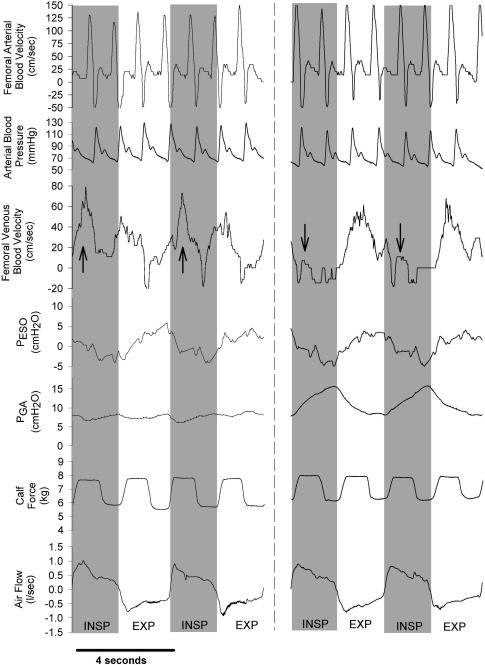Figure 3. Raw data traces showing arterial and venous blood velocity, MAP, PES and PGA, calf force and airflow during mild contraction conditions. Inspiration is again denoted by the shaded areas and a downward deflection in the airflow trace.
Note that arterial inflow remains again unaffected by the type of breathing pattern utilized by the subject, and is also relatively unaffected by the calf contraction cycle. However, significant respiratory modulation of femoral venous outflow persists in the face of mild calf contraction during both ribcage and diaphragm breathing, as the phasic increases in venous return associated with the calf muscle pump are most pronounced during a ribcage inspiration (denoted by upward arrows). In contrast, during a diaphragmatic inspiration, anterograde femoral venous blood flow occurs exclusively during the calf contraction phase (denoted by downward arrows).

